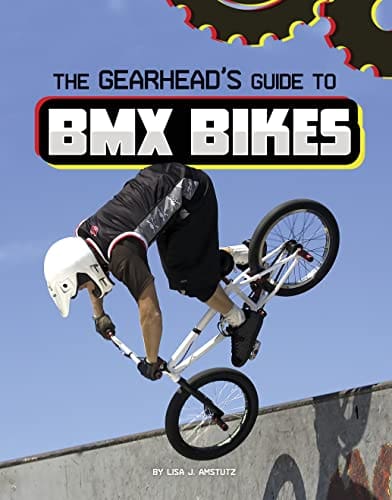
Don’t miss out on the opportunity to become a BMX expert with the The Gearhead’s Guide to BMX Bikes (Gearhead Guides) Kindle Edition ↗. This must-read guide offers valuable insights on BMX bike components, maintenance, and riding techniques. Make sure you have all the knowledge you need to make the most of your BMX journey. Download your copy today and unlock the secrets of BMX biking!
Introduction
BMX biking is an exciting and adrenaline-pumping sport that has gained popularity worldwide. Choosing the right BMX bike is crucial for a great riding experience. This comprehensive guide will help you make an informed decision when buying your first BMX bike.
Understanding BMX Biking
History of BMX
BMX (Bicycle Motocross) originated in the early 1970s in California as an alternative to motocross racing. It quickly gained popularity and has since evolved into various disciplines, each with its unique style and requirements.
Different Types of BMX Riding
- Racing: High-speed racing on dirt tracks with jumps, banked turns, and obstacles.
- Freestyle: Performing tricks and stunts on flat surfaces, ramps, and obstacles.
- Dirt Jumping: Aerial stunts on dirt jumps and trails.
- Street: Technical riding on urban features like stairs, ledges, and handrails.
Popular events and competitions include the X Games, UCI BMX World Championships, and Vans BMX Pro Cup Series.
Components of a BMX Bike
Frame
- Material: Chromoly steel is the most popular due to its strength and light weight. Cheaper options include high-tensile steel, while aluminum is preferred for racing bikes.
- Geometry and size: Choose a frame size suitable for your height and riding style. Freestyle frames have a steeper head tube angle for better control, while racing frames have a longer wheelbase for stability.
Wheels and Tires
- Size: Most BMX bikes have 20-inch wheels, but larger 24-inch wheels are also available for taller riders or cruisers.
- Tire tread patterns: Choose according to your riding style – smoother treads for park and street, knobbier treads for dirt and racing.
Drivetrain
- Gearing: Most BMX bikes have a single-speed drivetrain for simplicity and durability. Racing bikes may have a multi-speed setup.
- Crankset and chainring: Three-piece cranksets are stronger and lighter than one-piece options. The number of teeth on the chainring affects gear ratios and acceleration.
Brakes
- Types: U-brakes and V-brakes are common in BMX, while disc brakes offer better stopping power, especially in wet conditions.
- Brakeless BMX bikes: Some street and freestyle riders prefer brakeless setups for aesthetics and weight reduction.
Handlebars, Stem, Pedals, Seat, Seat Post, Pegs, and Hub Guards
Choose handlebars, stem, pedals, seat, and seat post according to personal preference and riding style. Street and freestyle riders may need pegs and hub guards for grinding and sliding.
Choosing the Right BMX Bike for Your Needs
- Determine your riding style.
- Set a budget.
- Consider bike weight and durability.
- Ensure the right sizing and fit.
- Research brand reputation and warranty.
Top BMX Bike Brands and Models
The Mongoose Legion Freestyle BMX Bike Series ↗ is a popular choice for beginners and intermediate riders, offering various models at different price points. These bikes have chromoly frames, three-piece cranksets, and U-brakes.
The Redline Bikes MX BMX Race Series ↗ is a great option for those interested in racing. These bikes feature lightweight aluminum frames, race-specific geometry, and powerful V-brakes.
Watch this YouTube video to learn more about choosing the right BMX bike: How To Choose The Right BMX Bike ↗
BMX Bike Accessories and Protective Gear
- Essential accessories: Helmet, gloves, knee/elbow pads
- Optional accessories: Bike lock, tools, spare tubes
- Tips for choosing the right protective gear: Ensure a proper fit and prioritize comfort and durability.
BMX Riding Tips for Beginners
- Develop basic bike handling skills.
- Practice simple tricks and jumps.
- Be patient and consistent in your progress.
BMX Bike Maintenance
- Regular inspection and cleaning.
- Lubrication and chain tension.
- Brake adjustment and maintenance.
- Replace worn or damaged components.
Conclusion
Choosing the right BMX bike can significantly impact your riding experience. Consider your riding style, budget, and personal preferences when making your decision. With the right bike and proper gear, you’ll be well on your way to enjoying the thrilling world of BMX biking!
Related Articles
Thanks for checking out Best Ever BMX Bike Buying Guide For Getting Started, and we certainly hope you got something out of it. Here are other related posts that may suit your interest:
- Best Top 10 BMX Tricks for Beginners: A Comprehensive Guide ↗
- How to Choose the Right Mountain Bike for Your Needs ↗
- How to Choose the Right Road Bike: A Comprehensive Guide ↗
- Best Beginner’s Guide to Cycling ↗
Happy reading and good luck on your biking journey!
